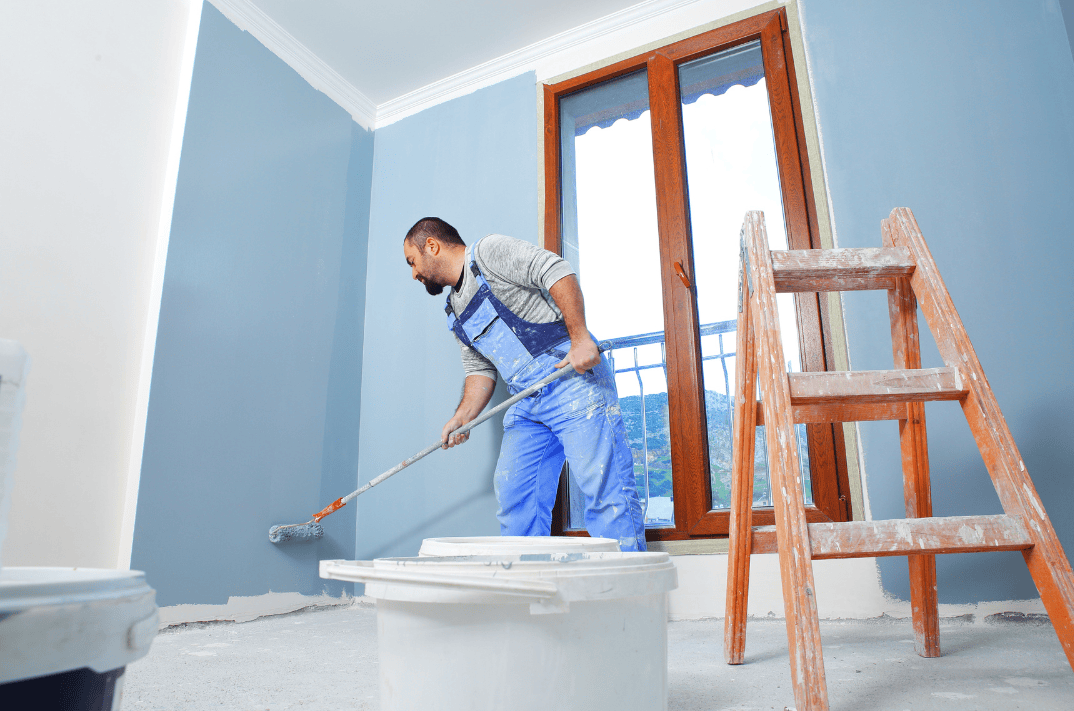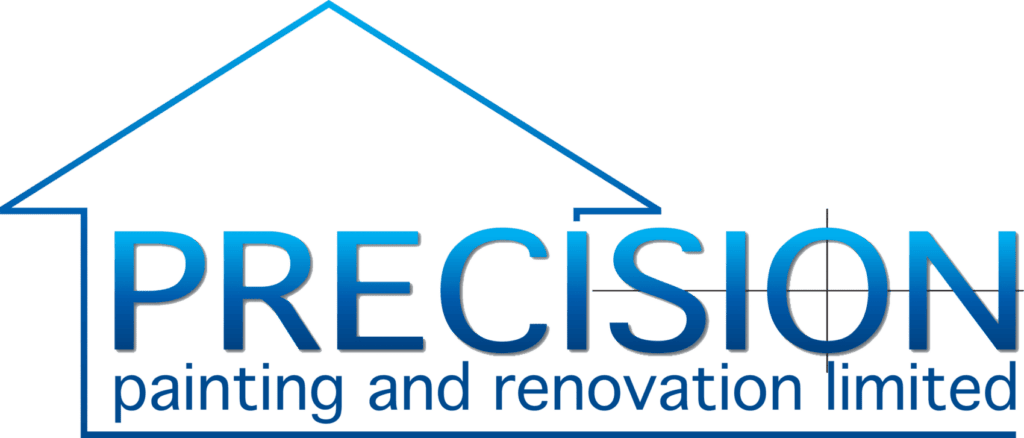Color fading and sun damage are two of the most frustrating challenges homeowners face when it comes to maintaining their property’s exterior. For those looking to keep their homes looking crisp, clean, and vibrant, professional expertise makes all the difference. House painters service professionals, like the seasoned team at Precision Painting, have honed techniques that combat the relentless effects of UV rays, weather, and time. Their solutions aren’t just cosmetic—they’re strategic, durable, and built to last.

The Science Behind Fading Paint
Paint fades because of photodegradation. When ultraviolet (UV) rays from sunlight hit the pigments in paint, they start to break down on a molecular level. Over time, this degradation causes once-vibrant colors to lose their saturation and luster. Darker colors tend to fade faster because they absorb more UV rays, while lighter tones are somewhat more resistant, but not immune.
Sun exposure isn’t the only culprit. Humidity, rain, and temperature fluctuations can amplify paint damage, causing it to crack, peel, or lose adhesion.
How Professionals Approach Exterior Painting in High-Exposure Areas?
Expert painters begin by evaluating the home’s orientation. South- and west-facing walls take the brunt of sunlight, so they demand extra attention. Precision Painting specialists assess each surface and determine the best course of action to defend against premature aging.
Key actions include:
- Surface Preparation: This is where long-lasting results are born. Power washing, scraping loose paint, sanding rough patches, and applying proper fillers ensure that the surface is clean and ready to bond with fresh coats of paint. A clean surface not only looks better, but it also holds paint longer.
- Priming with Purpose: Quality primers aren’t optional—they’re essential. A primer seals the surface and creates a strong foundation for paint to grip onto. More importantly, modern primers often include UV blockers that reduce sun damage from the inside out.
- Choosing UV-Resistant Paints: Seasoned painters rely on premium exterior paints with advanced formulations designed to withstand intense sunlight. These paints include ingredients such as acrylic resins and fade-resistant pigments that retain color and flexibility even in extreme conditions.
Material Choices That Matter
The type of paint used can make or break the finish. Experienced professionals lean toward 100% acrylic latex paints for exteriors because of their excellent UV resistance, flexibility, and longevity. Unlike oil-based paints, which can become brittle over time, acrylic paints move with the surface as it expands and contracts, which helps avoid cracking and peeling.
Pigment quality is equally important. Inexpensive paints often rely on organic pigments, which degrade quickly under UV exposure. Professional-grade paints use inorganic pigments (such as titanium dioxide), which are significantly more stable and fade-resistant.
Applying Paint Strategically
Professional painters aren’t just rolling on color—they’re calculating angles, timing, and technique. For example:
- Working in the Right Conditions: Painting under direct sunlight or in high humidity can ruin even the best materials. Precision Painting professionals wait for optimal weather—mild temperature, low wind, and low humidity—before applying any finish. This helps ensure proper curing and durability.
- Multiple Coats with Proper Dry Time: Rushing between coats causes premature failure. Experienced crews space out applications to let each layer cure properly, resulting in a stronger, longer-lasting film.
- Sun-Proofing Details and Trim: Doors, windows, soffits, and trim are often more vulnerable than walls. These areas get extra prep and extra layers of protective paint to shield against UV exposure.
Maintenance Plans That Extend Lifespan
Even the most expertly painted home won’t last forever without maintenance. Professional house painters emphasize the importance of routine inspections, especially on sun-exposed facades. Precision Painting often includes optional maintenance plans, which involve:
- Checking for signs of blistering, fading, or chalking
- Touching up damaged areas before problems spread
- Cleaning surfaces to remove dirt and pollutants that degrade paint over time
Homeowners who stay on top of small issues often go a decade or more without needing a full repaint.
Interior Sun Damage: An Overlooked Threat
UV rays don’t stop at the exterior. Interior paint can also fade when exposed to sunlight through large windows or glass doors. Professional painters address this with UV-resistant interior paints and by recommending window films or sheer curtains to cut down on direct sunlight.
Accent walls, in particular, can suffer uneven fading. That’s why consistent color and sheen selection, n-paired with mindful placement, nt—is key in sunlit rooms.
Protecting Wood, Stucco, and Other Substrates
Each building material reacts differently to sun exposure. Professionals know how to adapt their approach depending on the substrate:
- Wood: Especially vulnerable to warping and cracking when dried out by the sun. Experts use stain-blocking primers and flexible paints to keep moisture out and UV rays at bay.
- Stucco: Porous and prone to absorbing moisture, which accelerates fading. A thick, elastomeric coating not only enhances color retention but also bridges hairline cracks caused by heat expansion.
- Fiber Cement and Composite Siding: Less prone to moisture issues, but still subject to fading. Professionals choose paints that complement the thermal expansion properties of the material.
Restoring Faded Surfaces
Sometimes the sun has already done its damage. In these cases, a skilled team will strip off compromised layers, repair any substrate damage, and rebuild the paint system from the ground up. That might include:
- Removing chalky or powdery residues
- Filling cracks and caulking joints
- Priming with stain-blocking and UV-resistant basecoats
- Repainting with durable topcoats that match (or enhance) the original tone
This restoration process not only revives the aesthetic but also adds years of functional protection.
Color Choice: A Strategic Defense Against Fading
Color isn’t just about looks—it’s a defensive tool. Lighter shades reflect more sunlight, naturally reducing UV absorption and extending the life of the paint. That’s why professional painters often recommend subtle tones like beiges, pale blues, grays, or soft greens for heavily sunlit sides of the home.
Darker hues can still be used—especially for accents—but with the right protective coatings. Professionals understand how to balance aesthetic desires with practical needs to create a color palette that both pops and performs.
The Role of Sheen in Sun Protection
Not all finishes are created equal. Glossy and semi-gloss paints reflect more sunlight than flat or matte finishes, making them ideal for trim, doors, and areas where UV exposure is high. That reflection helps reduce the amount of pigment degradation.
However, gloss also reveals imperfections, so it’s not always suitable for broad surfaces like siding. Professional painters evaluate each surface individually to match the sheen with the function.
Why Choose Precision Painting?
When you hire Precision Painting, you’re not just getting a crew with brushes—you’re investing in decades of hands-on knowledge, premium products, and an eye for both beauty and longevity. Our team has mastered the craft of balancing curb appeal with protection, especially in climates where sunlight is relentless.
Here’s what sets us apart:
- Experienced Technicians: Every member of our crew is trained in modern techniques and material science. We know how to spot early signs of damage and correct them before they escalate.
- Product Excellence: We don’t cut corners with budget materials. We use industry-leading paints and coatings that are designed to endure years of UV exposure.
- Customized Plans: Your home isn’t a template—it’s unique. We tailor our approach to your location, siding material, and design goals, ensuring lasting results.
- Transparent Communication: From color consultations to final walkthroughs, we keep you informed every step of the way.
- Long-Term Value: Our work isn’t just beautiful—it’s durable. With proper care, our finishes outlast others by years, giving you better value and peace of mind.

